Projects
Naga
Naga is the southernmost city of the Kingdom of Meroe, Ptolemaic and Roman Egypt’s southern neighbour and most powerful rival. Situated in the middle of the Steppe northeast of Khartoum (the capital of the Republic of the Sudan), far from the banks of the Nile, Naga has remained untouched since its heyday between 200 BCE and 250 CE. This provides the optimal conditions for the archaeological study of the ruins, which are spread out over one square kilometre (approximately 247 acres). The excavations at Naga were funded by the German Research Foundation (Deutsche Forschungsgemeinschaft) and led by the Egyptian Museum in Berlin from 1995-2012 with the Egyptian Museum in Munich taking over the project in 2013.
Visit the Naga Project homepage for more information.
Project co-ordination: Dr. Arnulf Schlüter and Christian Perzlmaier M.A.
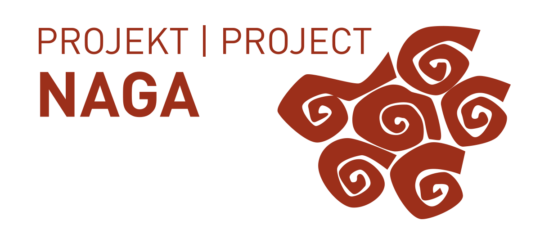
Inscription project
In the long-term, the Inscriptions Project seeks to scientifically study and publish all of the inscribed objects in the Museum. Texts that are faded or otherwise hard to read are enhanced and documented using a variety of methods (such as multi-spectral imaging, 3-D scans…). The project partners with various institutions such as the Institute for Egyptology and Coptology of the Ludwig-Maximilian University in Munich or the Department of Middle Eastern Languages and Cultures, UC Berkeley.
The following object groups are currently being processed:
- Statues
- Hieratic ostraca of the New Kingdom
- Ushebtis
- Coffins
- Stelae
Project co-ordination: Dr. Mélanie Flossmann-Schütze
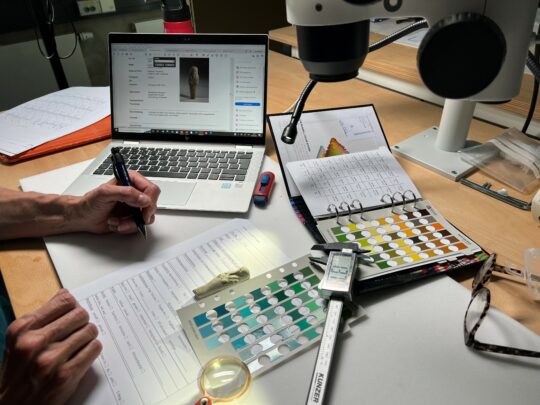 © Mélanie Flossmann-Schütze
© Mélanie Flossmann-SchützeDigital Reconstruction
The SMÄK is invested in the digital presentation of its objects and has initiated two pilot projects for digital reconstructions: the fragmentary statue torso ÄS 7100 from the Late Period (30th Dynasty, ca. 360 BCE) was given a photorealistic reconstruction, and the original paint of the falcon-headed statue Gl. WAF 22 was digitally restored. These results will soon be available to the museum public through digital media.
Project co-ordination: Dr. Arnulf Schlüter and Dr. Mélanie Flossmann-Schütze
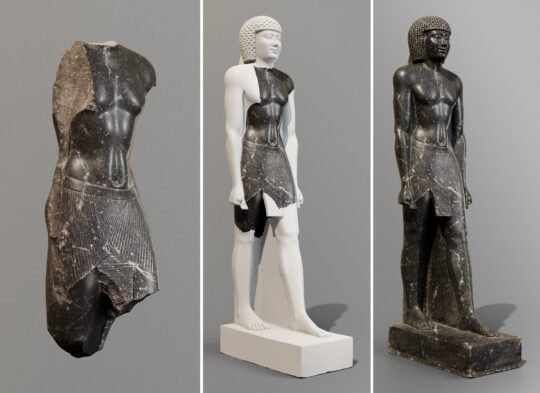 © SMÄK, Carl Elkins
© SMÄK, Carl ElkinsRadjedef
In the pyramid complex of Radjedef (Old Kingdom, 4th Dynasty, ca. 2580 BCE), a large number of red quarzite statues of the king once stood, the fragments of which are now scattered over a number of institutions. Apart from the Egyptian Museum in Cairo, the Institut Français d’Archéologie Orientale in Cairo and the Louvre in Paris, the SMÄK also houses some 40 fragments of these royal statues. In the context of the project “The Statue Fragments of King Radjedef. Digital reconstruction and virtual presentation”, the Munich fragments were scanned and digitally inserted into preliminary statue reconstructions. In the next step, fragments from other museums will be scanned in 3-D so as to complete the digital visualisation of the original statue programme of the pyramid complex.
Project co-ordination: Dr. Mélanie Flossmann-Schütze
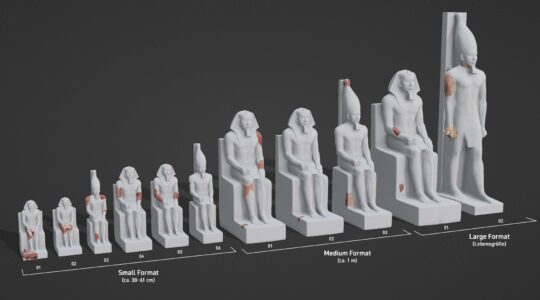 © SMÄK, Carl Elkins
© SMÄK, Carl ElkinsMuseum Database
The digital documentation of the objects is a central part of curating a collection. In the context of the continuous updating and expansion of our internal database, the files are being cross-checked and optimised to be compatible with current standards (such as NFDI4Object). The goal is to make the SMÄK collection accessible to the public in an online database.
Project co-ordination: Dr. Jan Dahms
History of the collection and provenance research
The SMÄK is constantly studying the provenance of its museum pieces, whether in a general sense or in the context of specific projects. The systematic recording and assessment of archive material and other sources from external institutions have helped give a better understanding of the history of the collection over the last few centuries as well bringing new information to light on the origins and chain of ownership of various objects.
Project co-ordination: Dr. Jan Dahms
Material Analysis and ancient workmanship techniques
The SMÄK is interested in any application of the natural sciences that can shed new light on the objects in its collection. Internal and co-operative projects have, for example, led to material analysis and the examination of ancient crafting techniques. Lately, the museum has studied:
- The golden treasure of Amanishakheto
- Egyptian Blue pigment
- Copper objects from the 2nd millennium BCE
- The statue of Kheti (ÄS 7903) (MAAT 24 | 2022)
Project co-ordination: Dr. Jan Dahms
Green Museum
As a responsible cultural institute, we feel that protecting the environment is one of our foremost duties. Therefore, we are acting to avoid environmental pollution and the unnecessary use of resources. We are introducing systematic principles of ecological sustainability, involving our employees, partners and museum guests in the process.
We are taking steps to reduce greenhouse gasses and waste, implementing the use of quality eco-friendly products, regionally sourced whenever possible. We are in the process of reducing waste production by buying waste-reducing products and practicing waste separation. We have set ourselves concrete ecological goals, and are actively measuring our progress and reporting on it to the public.
Report “On the Road to a Green Museum” [in German]
Report “Deactivating at Night to Save Energy” [in German]
Project co-ordination: Dr. Carsten Gerhard (external)
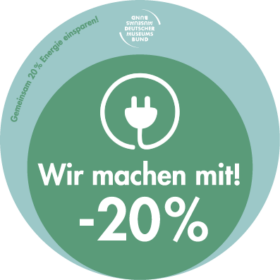
Research applications
Do you have questions in the context of your own research or would like to work on our originals? Then please contact
Dr. Mélanie Flossmann-Schütze
Assistant Director and Head Curator
+49 89 / 2 89 27 – 750
melanie.flossmann(at)smaek.de
Dr. Jan Dahms
Curator
+49 89 / 2 89 27 – 751
jan.dahms(at)smaek.de

